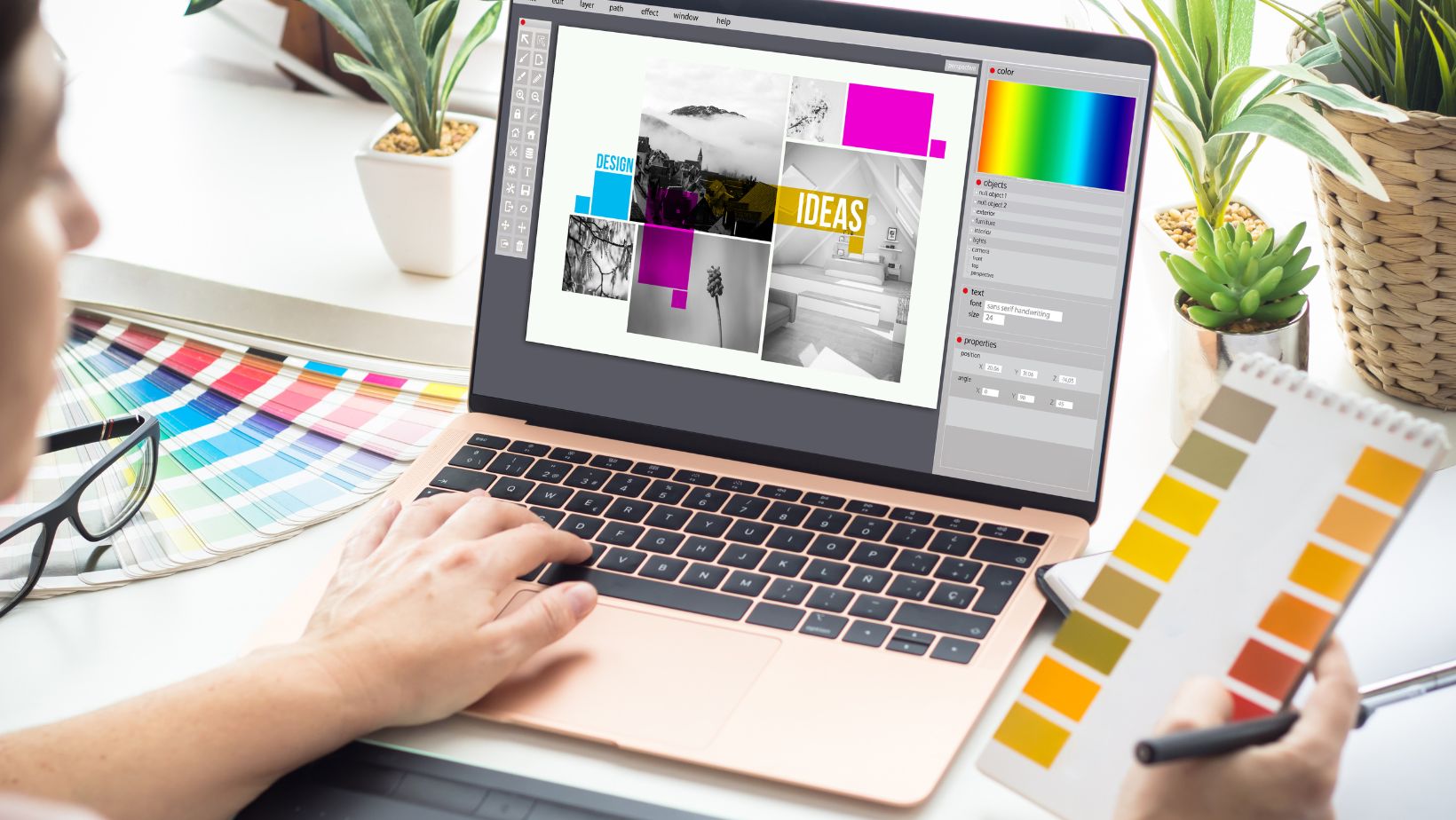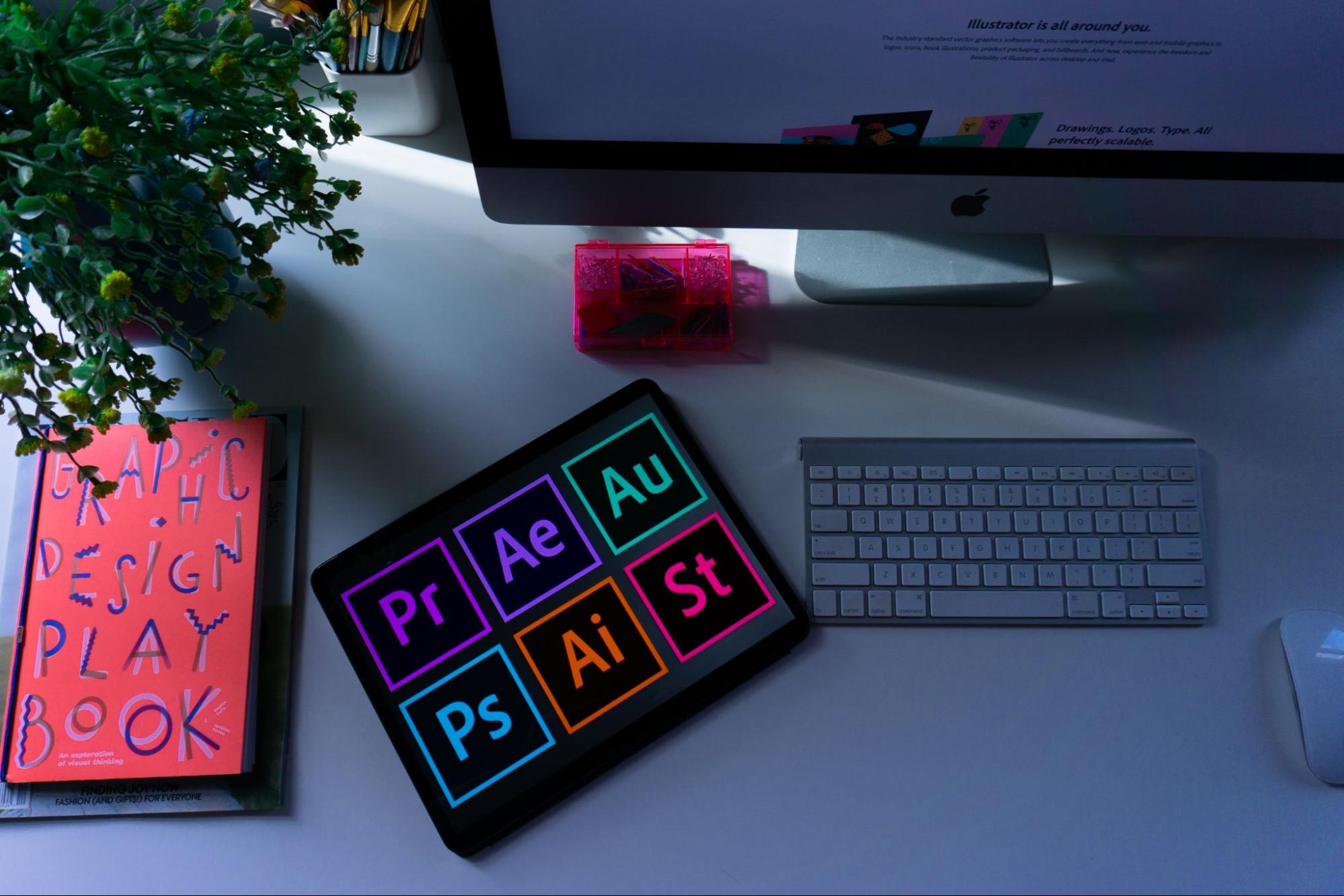
Students often misconstrue graphic design as merely the art of making things “look pretty.” It’s about conveying information in the most effective, memorable way possible.
In today’s world of Instagram stories and Pinterest boards, how things look carries immense weight. Imagine walking into a gallery where each piece of work, each display, culminates a student’s academic journey. Look at it this way: if the thought of using paper24 service ever popped into your head for a fleeting moment, consider the impact of presenting your work more visually engagingly.
Who knows? You might fall in love with the art of learning all over again!
Table of Contents
ToggleThe Magic of Graphic Design in Academia
Making Information Digestible
Have you ever tried reading a dense academic paper? Intimidating, isn’t it? Now, envision that paper with charts, highlighted quotes, and vibrant visuals. Graphic design turns intimidating information into engaging content.
Standing Out in Presentations
Consider two presentations: one with rudimentary, monotone slides and another with engaging visuals, infographics, and harmonious color schemes. Naturally, the latter stays etched in memory.
Building a Personal Brand
As the job market gets increasingly competitive, having a unique design identity across your academic and professional documents can set you apart. It’s like wearing a tailored suit instead of off-the-rack clothing.
Basic Design Principles Every Student Should Know
Venturing into graphic design might seem daunting initially. However, by understanding and applying some foundational principles, you’ll be crafting compelling designs in no time:

- Balance. Equilibrium in design keeps viewers engaged. Distribute elements so one side doesn’t overshadow the other to ensure harmony and cohesion.
- Contrast. Leveraging contrast draws attention and makes your content pop. Think black against white, bold versus thin, or modern meets classic.
- Alignment. Like books on a shelf, neatly aligned elements ooze professionalism and clarity.
- Repetition. Repetition reinforces visual cohesion. A repeated design element or style becomes a familiar and recognizable part of your design story.
- Proximity. Group elements related to each other. It helps a natural flow of information.
- Space. Embrace the power of negative space. It’s the breathing room that accentuates what’s truly important in your design.
Tools to Kickstart Your Design Journey
Starting with graphic design can be smooth sailing with the right tools in your arsenal. While some professional designers use high-end software, several free alternatives cater perfectly to budding designers:
- Canva. Beyond just templates, Canva offers tutorials, design courses, and inspiration boards.
- GIMP. Think of it as the open-source cousin of Photoshop, brimming with advanced features for photo manipulation.
- Inkscape. This tool is perfect for logos, icons, and detailed illustrations.
- Piktochart. It is tailored for infographics and presentations and has a suite of icons, images, and design components.
- Color Hunt. Beyond offering palettes, it gives insight into current color trends and combinations.
Graphic Design Tips for the Uninitiated
Graphic design relies heavily on principles, tools, and intuition. It’s easy to feel overwhelmed by the plethora of software options, design terminology, and the constant evolution of design trends.
Let’s explore this world step by step:
Start With Templates
- Why They Matter. Templates provide a structure, acting as guiding rails for your creativity. They handle the basics so that you can focus on customizing and refining.
- Personalize Them. While templates provide the skeleton, you bring the soul. Adjust colors to convey moods, choose fonts that align with your message, and add elements that reflect your personality.
- Where to Find Them. Websites like Canva, Adobe Spark, and even Microsoft PowerPoint offer various design templates catering to different needs.
Less Is Often More
- The Clutter Pitfall. In the enthusiasm to make a design stand out, one might be tempted to use many elements, colors, or fonts. However, this often leads to a chaotic design that distracts more than it engages.
- Embrace Simplicity. A clean, minimalist design ensures that your message remains front and center. Use color, space, and typography judiciously to create designs that breathe.
- Examples to Emulate. Apple’s advertising campaigns and Google’s homepage are classic examples of the power of simplicity in design.
Seek Feedback
- The Value of External Perspectives. Being too close to a project can sometimes cloud judgment. Fresh eyes can offer insights or catch issues you might have overlooked.
- Where to Get Feedback. Platforms like Behance and Dribble are for more than just professionals. They’re communities where new and seasoned designers share their work and exchange feedback. Alternatively, sharing your designs with friends, family, or peers can provide diverse perspectives.
- Implement Constructively. Not all feedback will align with your vision, and that’s okay. The key is to filter suggestions that resonate and enhance your work without losing its essence.
Stay Updated on Trends

- Why It’s Essential, design isn’t static. What’s trendy today might be passé tomorrow. Staying updated ensures your designs remain relevant and appealing.
- How to Stay Abreast. Subscriptions to design-centric publications, joining webinars, attending workshops, or even following influential designers on social media can provide a wealth of knowledge. Smashing Magazine and Design Week offer rich insights into the latest in design.
- Balance Trends With Timelessness. While it’s good to be trendy, ensuring your designs have a timeless appeal is equally important. Classics remain classics for a reason.
Invest Time in Learning Software
- Software Skills Elevate Design. Just as a painter must master their brushes, a designer should be adept with their tools. Familiarizing yourself with software can exponentially enhance the quality and efficiency of your designs.
- Begin With Basics. Tools like Canva or Adobe Spark offer a user-friendly interface for those just starting. Once comfortable, you can explore more advanced software like Adobe Illustrator or Photoshop.
- Tutorials Are Gold—websites like Udemy, Coursera, or YouTube host many courses catering to varying skill levels. Dedicate time to learn, practice, and refine.
Engaging Projects to Hone Your Skills
Taking on small projects can be both fun and instructive. Here are a few more ideas:
- Redesigned Class Notes. How about turning notes into a magazine-style layout? Challenge yourself with different subjects.
- Event Posters. Beyond college events, think about local community events, online webinars, or even family gatherings.
- Personal Branding. Delve deeper than logos. Think business cards, letterheads, and digital signatures.
- Photo Collages. Documenting your college journey can extend to events, seasons, or study groups. Add quirky captions and memorable quotes.
Wrapping Up
Marrying aesthetics with academia through graphic design is like giving your work a voice. It’s more than just beautification—it’s about effective communication.
Dive into the world of graphic design; let your academic journey be a vivid tapestry of memories, insights, and achievements!






